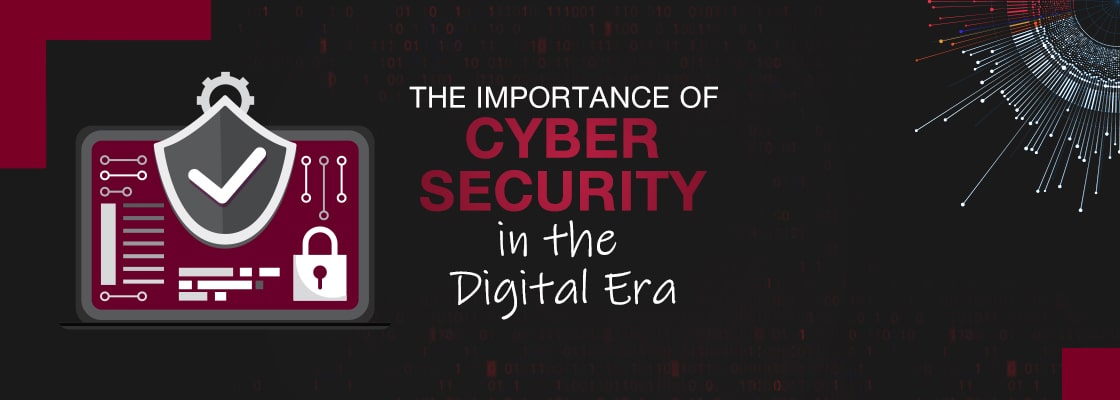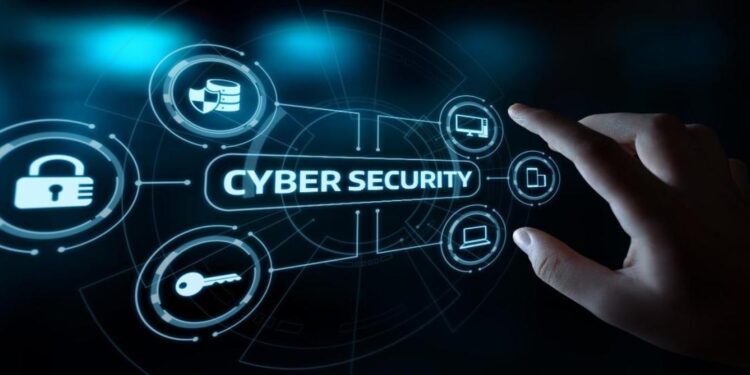In the fast-paced world of today, where our lives are intertwined with technology, ensuring cybersecurity is paramount. This topic delves into the essentials of cybersecurity in our digital age, shedding light on the risks, best practices, and emerging trends that shape our online security landscape.
Importance of Cybersecurity in Today’s Digilife Era

In today’s digital age, cybersecurity plays a crucial role in safeguarding sensitive information and protecting individuals and organizations from malicious cyber threats. With the increasing reliance on technology for communication, financial transactions, and data storage, the importance of cybersecurity cannot be overstated.
Potential Risks and Threats in the Current Digital Landscape
Cyber threats such as malware, phishing attacks, ransomware, and data breaches are prevalent in the current digital landscape. These threats can compromise personal information, financial data, and intellectual property, leading to identity theft, financial losses, and reputational damage.
Consequences of Cyber Attacks on Individuals and Organizations
The consequences of cyber attacks can be devastating for both individuals and organizations. For individuals, cyber attacks can result in financial losses, identity theft, and invasion of privacy. On the other hand, organizations may suffer from data breaches, intellectual property theft, operational disruptions, and reputational harm.
The financial costs of recovering from a cyber attack can be substantial, not to mention the loss of customer trust and confidence.
Fundamentals of Cybersecurity
Cybersecurity is the practice of protecting systems, networks, and data from digital attacks. It involves implementing measures to prevent unauthorized access, data breaches, and other cyber threats.
Basic Principles of Cybersecurity
- Confidentiality: Ensuring that data is only accessible to authorized individuals or systems.
- Integrity: Maintaining the accuracy and consistency of data throughout its lifecycle.
- Availability: Ensuring that data and systems are accessible when needed.
- Authentication: Verifying the identity of users or systems to prevent unauthorized access.
- Authorization: Granting appropriate access rights to users based on their role or responsibilities.
Common Cybersecurity Measures and Tools
- Firewalls: Act as a barrier between a trusted network and untrusted networks, monitoring and controlling incoming and outgoing network traffic.
- Antivirus Software: Detects, prevents, and removes malicious software like viruses, worms, and trojans.
- Encryption: Converts data into a code to prevent unauthorized access, ensuring confidentiality.
- Multi-factor Authentication: Requires users to provide multiple forms of verification to access a system, enhancing security.
- Intrusion Detection Systems (IDS): Monitors network traffic for suspicious activity or violations of security policies.
Cybersecurity Best Practices

In today's digital world, cybersecurity is more important than ever. Here are some best practices to help individuals and businesses stay safe online:
Effective Cybersecurity Practices for Individuals
- Keep software and devices updated regularly to patch security vulnerabilities.
- Use strong, unique passwords for each online account and consider using a password manager to keep track of them.
- Be cautious of suspicious emails, links, and attachments, as they could be phishing attempts.
- Enable two-factor authentication whenever possible for an added layer of security.
- Regularly back up important data to an external drive or cloud storage to prevent data loss in case of a cyberattack.
Recommended Cybersecurity Protocols for Businesses
- Implement a robust cybersecurity policy that Artikels guidelines for employees on handling sensitive information.
- Conduct regular security training for employees to educate them on cybersecurity best practices and how to identify potential threats.
- Use encryption to protect data in transit and at rest to prevent unauthorized access.
- Implement access controls to restrict employee access to sensitive data based on their roles and responsibilities.
- Regularly conduct security audits and assessments to identify and address any vulnerabilities in the network.
Tips on Creating Strong Passwords and Securing Personal Information Online
- Use a mix of uppercase and lowercase letters, numbers, and special characters in passwords to increase complexity.
- Avoid using easily guessable information like birthdays or names in passwords.
- Change passwords regularly and never reuse old passwords across multiple accounts.
- Secure personal information by limiting the amount of data shared online and being cautious of privacy settings on social media platforms.
- Consider using a virtual private network (VPN) when connecting to public Wi-Fi networks to encrypt internet traffic and protect sensitive information.
Emerging Trends in Cybersecurity
As technology continues to evolve, new trends in cybersecurity are constantly emerging to address the ever-changing landscape of cyber threats. Let's explore some of the latest trends shaping the future of cybersecurity.
Impact of Artificial Intelligence and Machine Learning
Artificial intelligence (AI) and machine learning (ML) are revolutionizing the field of cybersecurity by enabling organizations to detect and respond to threats in real-time. AI-powered tools can analyze vast amounts of data to identify patterns and anomalies that may indicate a potential cyber attack.
Machine learning algorithms can continuously learn from new data to enhance threat detection capabilities and improve overall security posture. The integration of AI and ML technologies in cybersecurity operations is helping organizations stay ahead of sophisticated cyber threats and mitigate risks more effectively.
Role of Blockchain in Strengthening Cybersecurity Measures
Blockchain technology, known for its decentralized and immutable nature, is playing a significant role in strengthening cybersecurity measures across various industries. By leveraging blockchain, organizations can enhance data security, protect sensitive information, and establish trust in digital transactions. The use of blockchain in cybersecurity applications, such as secure data storage, identity management, and secure communication, helps prevent data breaches and unauthorized access.
The transparent and tamper-proof nature of blockchain ensures the integrity and confidentiality of critical information, making it a valuable tool in safeguarding against cyber threats and ensuring data privacy.
Cybersecurity Challenges in Today’s Digital World
In today's digital world, cybersecurity professionals face numerous challenges that threaten the security of organizations and individuals alike. These challenges range from securing IoT devices and cloud infrastructure to addressing the cybersecurity skills gap.
Securing IoT Devices and Cloud Infrastructure
Securing IoT devices and cloud infrastructure presents a significant challenge due to the sheer number of connected devices and the complexity of cloud systems. IoT devices often lack robust security features, making them vulnerable to cyber attacks. Similarly, cloud infrastructure can be targeted by hackers seeking to exploit vulnerabilities in the system.
Securing these devices and infrastructure requires constant monitoring, patching vulnerabilities, and implementing strong encryption protocols to protect sensitive data.
Cybersecurity Skills Gap and Implications
The cybersecurity skills gap is another major challenge faced by professionals in the field. As the demand for cybersecurity experts continues to rise, there is a shortage of skilled professionals to fill these roles. This gap not only hinders organizations from effectively addressing cybersecurity threats but also leaves them vulnerable to attacks.
Without adequate cybersecurity expertise, organizations struggle to implement effective security measures, leaving them at risk of data breaches and other cyber threats.
Cybersecurity for Remote Work
In today's digital age, remote work has become increasingly common, bringing with it a new set of cybersecurity challenges. Securing remote work environments is crucial to protect sensitive data and ensure privacy for both individuals and organizations.
Tips on Securing Remote Work Environments
- Use secure and encrypted connections: Ensure that all devices used for remote work are connected to secure networks with encryption protocols in place.
- Implement multi-factor authentication: Require additional verification steps, such as a code sent to a mobile device, to access work-related accounts and systems.
- Update software regularly: Keep all software, including operating systems, applications, and security tools, up to date to patch vulnerabilities and protect against cyber threats.
- Educate employees on cybersecurity best practices: Provide training and guidelines on how to identify and respond to potential security risks while working remotely.
Vulnerabilities Associated with Remote Work Setups
- Unsecured Wi-Fi networks: Public Wi-Fi networks or unsecured home networks can be easily compromised, allowing attackers to intercept sensitive data.
- Phishing attacks: Remote workers may be more susceptible to phishing emails and social engineering tactics designed to trick them into divulging confidential information.
- Endpoint security risks: Devices used for remote work, if not properly secured, can become entry points for malware and unauthorized access to corporate networks.
Strategies for Ensuring Data Protection and Privacy While Working Remotely
- Use virtual private networks (VPNs): Encrypt internet traffic and maintain online privacy by using VPNs to create secure connections when accessing company resources remotely.
- Enable remote device management: Implement tools to remotely monitor and manage devices used for work, such as enforcing security policies and conducting regular security scans.
- Secure file sharing and collaboration: Utilize secure platforms for sharing files and collaborating with colleagues to prevent unauthorized access to sensitive information.
Summary

As we navigate the complexities of cybersecurity in today's digital world, it becomes evident that safeguarding our digital assets is not just a choice but a necessity. By staying informed, adopting best practices, and embracing emerging technologies, we can fortify our defenses and protect our online presence from evolving threats.
Common Queries
What are the common risks associated with cybersecurity in today's digital landscape?
Common risks include data breaches, malware attacks, phishing scams, and ransomware threats.
How can individuals create strong passwords to enhance cybersecurity?
Individuals can create strong passwords by using a combination of letters, numbers, and special characters, and avoiding easily guessable information like birthdays or names.
What impact do artificial intelligence and machine learning have on cybersecurity?
Artificial intelligence and machine learning help in detecting and responding to cyber threats more efficiently, improving overall cybersecurity defenses.
What challenges do cybersecurity professionals face in securing IoT devices?
Securing IoT devices poses challenges due to their interconnected nature, making them vulnerable to cyber attacks if not properly protected.
How can businesses enhance their cybersecurity readiness?
Businesses can enhance their cybersecurity readiness by investing in robust security measures, conducting regular training for employees, and staying updated on the latest cybersecurity trends.












